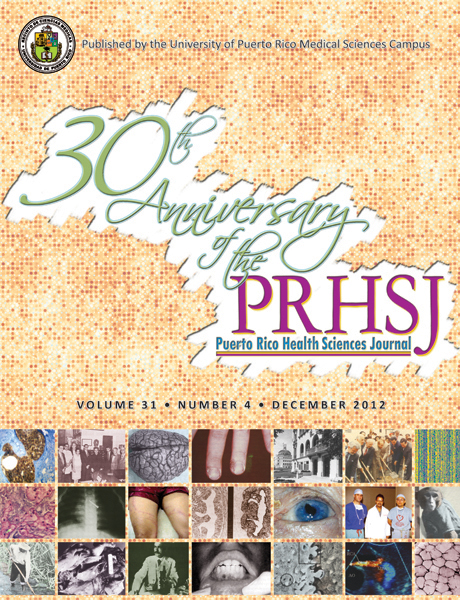Abstract
Self-sampling techniques have been shown to be reliable in determining human papillomavirus (HPV) infection, although the acceptability of this method of sampling has not been studied in Puerto Rico (PR). The objective of this study was to determine the acceptability of cervicovaginal and anal self-sampling for HPV DNA testing among women in PR. One hundred women aged 18-34 years old and undergoing routine Pap smears in an OBGYN clinic in PR were recruited. Interviewer-administered and computer-based questionnaires were used to collect information on relevant risk factors. To assess acceptability, four-item acceptability Likert scales were used that measured comfort, pain, privacy, and embarrassment. Overall acceptability indexes were calculated as the sum of the Likert scores. Clinician-collected and selfcollected cervicovaginal and anal samples for HPV-DNA testing were obtained from the participating women. Although the acceptability of both sampling methods was high, it was higher for self- rather than clinician-sampling of the cervix (difference in mean score = -0.71, p < 0.05); contrarily, it was higher for clinician-sampling of the anus (difference in mean score = 0.64). When analyzing individual items within the scale, less embarrassment was observed with respect to the self-collection of cervical and anal samples. Nevertheless, most women reported that they preferred having a clinician collect cervical and anal samples (67% and 61%, respectively); and most of these women (86% for cervical samples and 92% for anal samples) felt more confident that this sample would be properly taken. Despite this, in this population, the high level of acceptability with regard to self-collected samples and the previously documented concordance between self- and clinician-collected samples support the use of cervical and anal HPV DNA self-sampling techniques in future HPV-related population-based studies and screening programs in PR.
Authors who publish with this journal agree to the following terms:
a. Authors retain copyright and grant the journal right of first publication with the work simultaneously licensed under a Creative Commons Attribution License that allows others to share the work with an acknowledgement of the work's authorship and initial publication in this journal.
b. Authors are able to enter into separate, additional contractual arrangements for the non-exclusive distribution of the journal's published version of the work (e.g., post it to an institutional repository or publish it in a book), with an acknowledgement of its initial publication in this journal.
c. Authors are permitted and encouraged to post their work online (e.g., in institutional repositories or on their website) prior to and during the submission process, as it can lead to productive exchanges, as well as earlier and greater citation of published work (See The Effect of Open Access).
